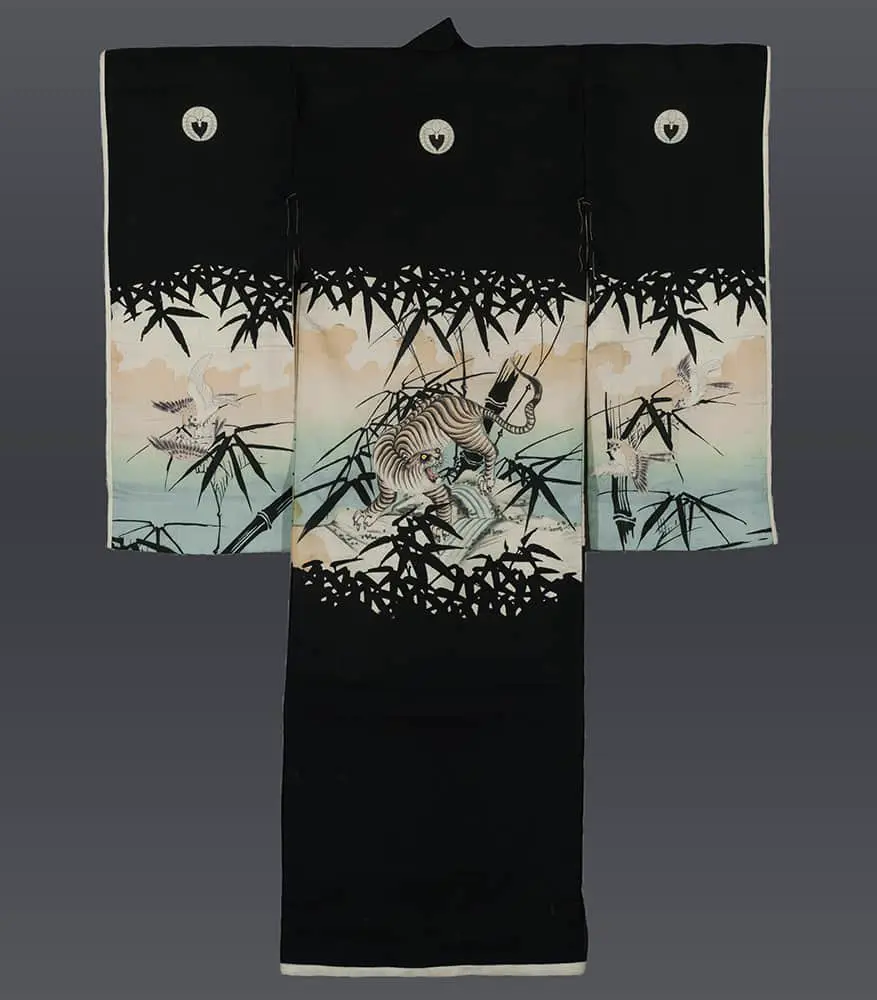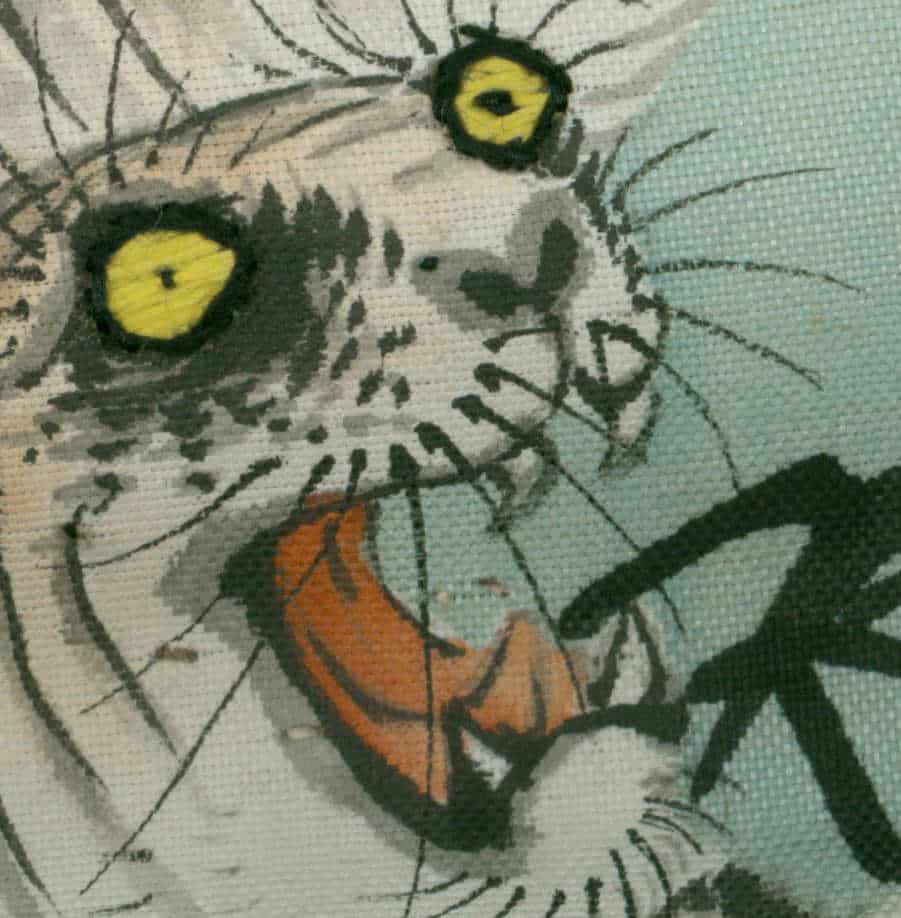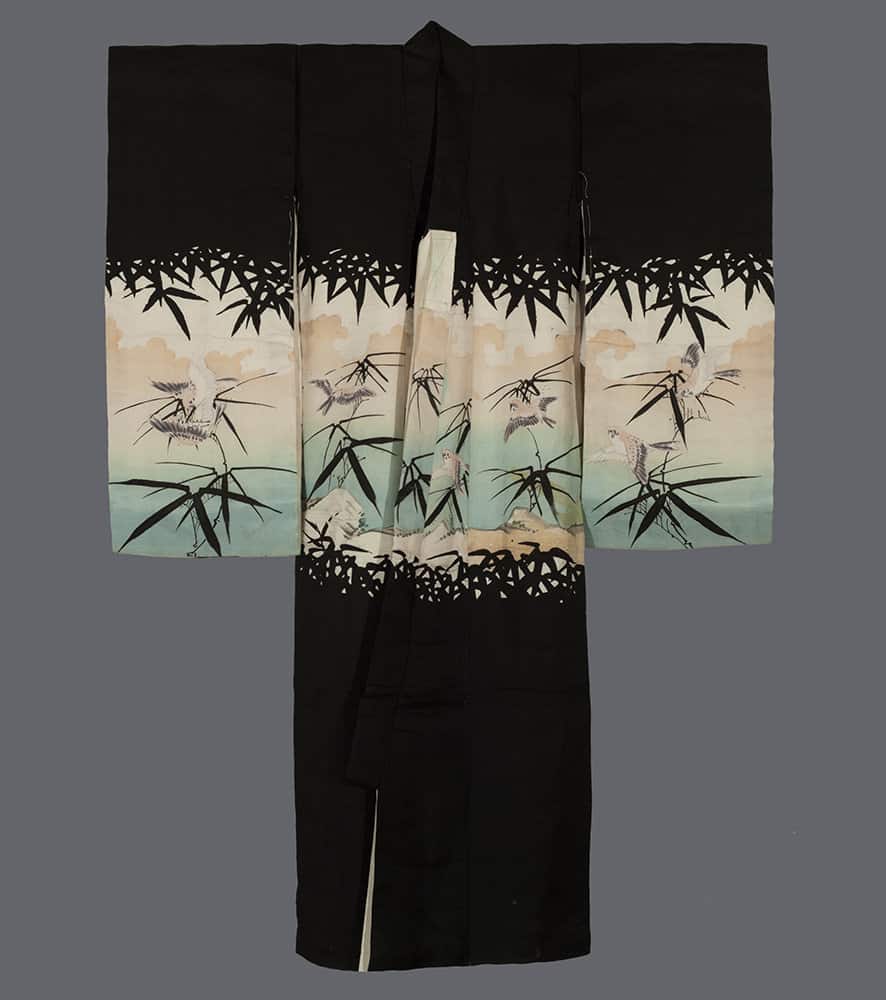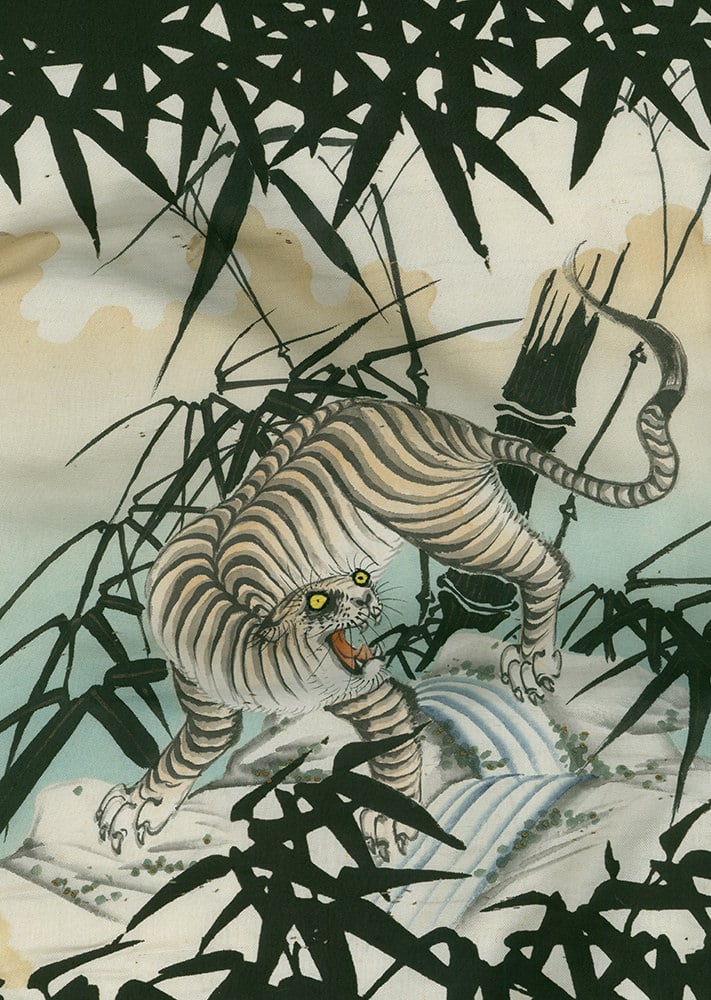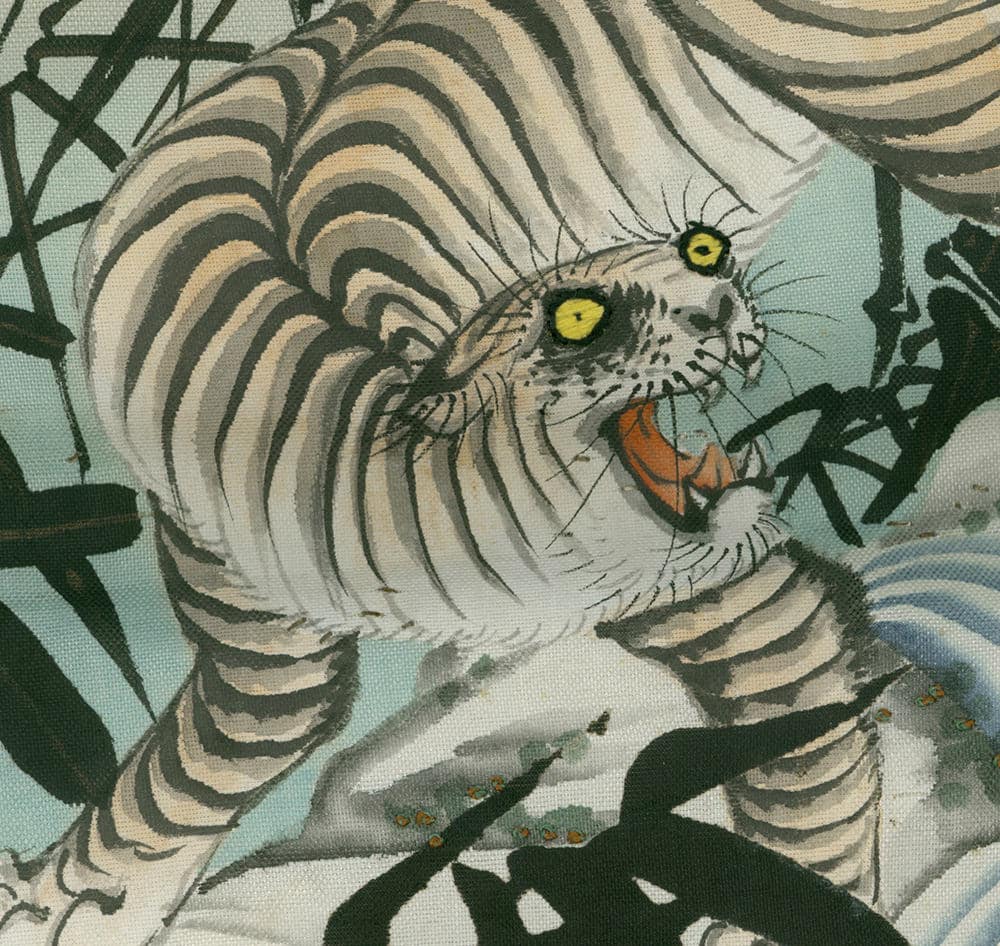This silk boy's ceremonial kimono represents a masterpiece of Japanese textile artistry, created specifically for age celebration ceremonies at Shinto shrines. The garment embodies the cultural significance of such rituals, where young boys would receive blessings and protection for their journey into adulthood.
The composition demonstrates sophisticated artistic planning, with a dramatic central scene framed by decorative borders of sasa (bamboo grass) rendered in bold black silhouettes. This bamboo grass creates intricate negative space patterns that frame the central narrative while symbolizing resilience and steady growth - qualities desired for a young person's development.
At the heart of the design lies a magnificent tiger, painted with remarkable skill using combined sumi-e and yuzen techniques. The tiger appears to be moving through the bamboo grove, its form captured with dynamic brushwork that conveys both power and grace. The creature's stripes and muscular form are enhanced with embroidered details that add texture and dimensionality to the painted surface. In Japanese symbolism, the tiger represents courage, protection from evil, and the strength needed to overcome life's challenges.
Accompanying the tiger are delicately rendered sparrows, painted with subtle washes and fine linework. These small birds, often associated with joy and community in Japanese culture, provide a counterpoint to the tiger's fierce presence while maintaining the natural harmony of the bamboo grove setting.
The technical execution reveals the highest level of craftsmanship. The sumi-e ink painting provides the foundational brushwork with its characteristic fluid lines and tonal variations, while the yuzen technique adds the refined color work and detailed pattern elements. The embroidered highlights - in silk threads - catch light and add precious metal-like accents that would have shimmered during ceremonial movements.
The overall color palette transitions from deep black at the top and bottom to soft earth tones and muted greens in the central pictorial area, creating a sense of depth and atmosphere that draws the viewer into this miniature landscape. This kimono would have been treasured as both a ceremonial garment and a work of art, embodying the family's hopes for their son's courageous and protected future.
It measures approximately 28 inches (71 cm) along the shoulders and stands at about 37 inches (94 cm) in height.
This artwork is featured on pages 272-275 of Ceremonial Textiles of Japan, 18th to 20th Centuries. This book, published by Yorke Antique Textiles, can be previewed or purchased on our website here.
.avif)

